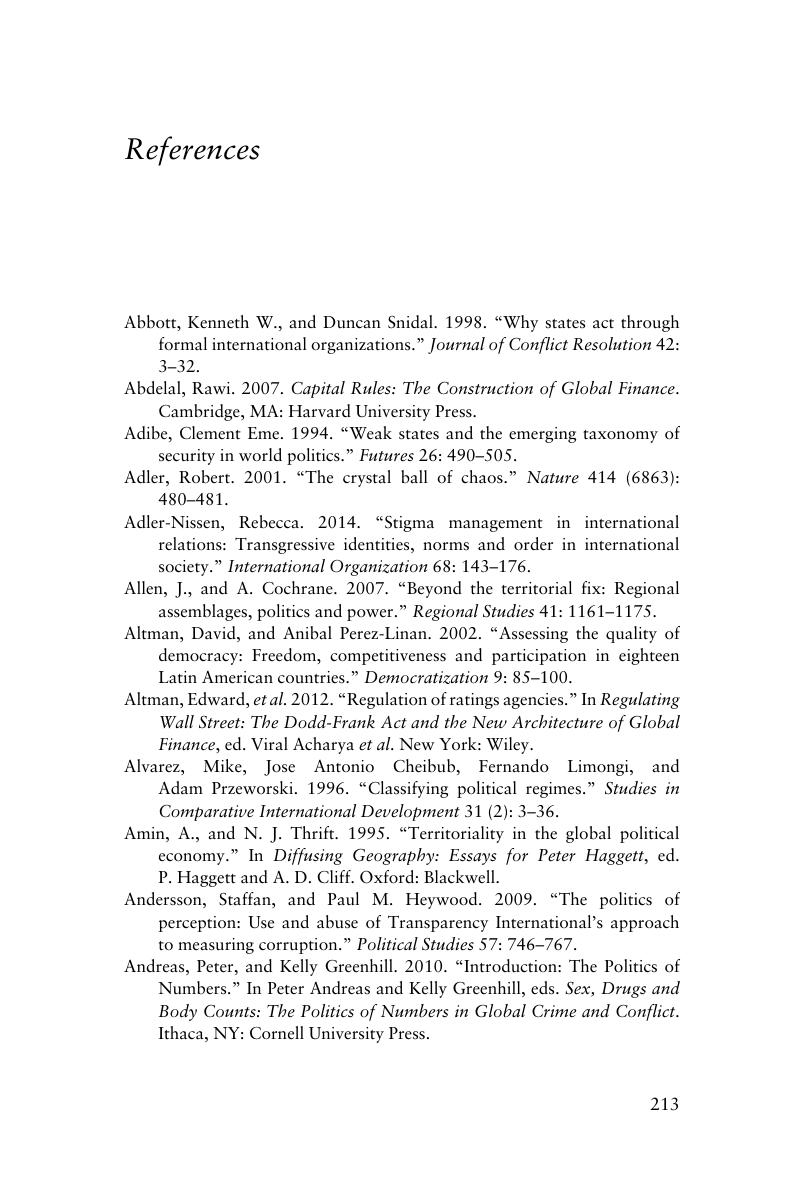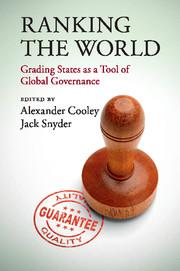Book contents
- Ranking the World
- Ranking the World
- Copyright page
- Contents
- Figures
- Tables
- Contributors
- Preface and acknowledgments
- Glossary
- 1 The emerging politics of international rankings and ratings
- 2 Just who put you in charge? We did
- 3 Corruption rankings
- 4 Measuring stateness, ranking political orders
- 5 Lost in the gray zone
- 6 Winning the rankings game
- 7 Conclusion
- Appendices
- References
- Index
- References
References
Published online by Cambridge University Press: 05 May 2015
- Ranking the World
- Ranking the World
- Copyright page
- Contents
- Figures
- Tables
- Contributors
- Preface and acknowledgments
- Glossary
- 1 The emerging politics of international rankings and ratings
- 2 Just who put you in charge? We did
- 3 Corruption rankings
- 4 Measuring stateness, ranking political orders
- 5 Lost in the gray zone
- 6 Winning the rankings game
- 7 Conclusion
- Appendices
- References
- Index
- References
Summary

- Type
- Chapter
- Information
- Ranking the WorldGrading States as a Tool of Global Governance, pp. 213 - 233Publisher: Cambridge University PressPrint publication year: 2015

